
The 118th Congress probably won’t be remembered for bipartisanship or any landmark legislation. Since the Republican party won back the House in the 2022 midterms, little has been accomplished. While some Democrats place a premium on bipartisanship, others are far more averse to working with the other side. In certain parts of the country, compromise with the Republican party is a tough sell.
Thanks to research from the Lugar Center and McCourt School of Public Policy, it’s possible to track the most and least bipartisan members of Congress. This article will examine the Democrats least inclined to reach across the aisle.
Why This Matters

In November American voters will determine the presidency and who controls Congress. One party may well win the government trifecta but it is more likely that one party will control the House, the other the Senate. If any meaningful legislation is to be passed by the 119th Congress, cooperation and bipartisanship will be needed so it is important to know who the potential deal makers and deal breakers are.
A Note on Leadership

The bipartisan index does not track either the majority or minority leader in the Senate so Mitch McConnell and Chuck Schumer are not included in the rankings because party leadership operates quite differently from regular members. It also does not include Senators with less than six months of service so Ben Sasse, who resigned in January 2023, is not included nor is Laphonza Bulter, the late Dianne Feinstein’s appointed replacement. Independents who caucus with the Democrats are included here.
10 – Dianne Feinstein (California)
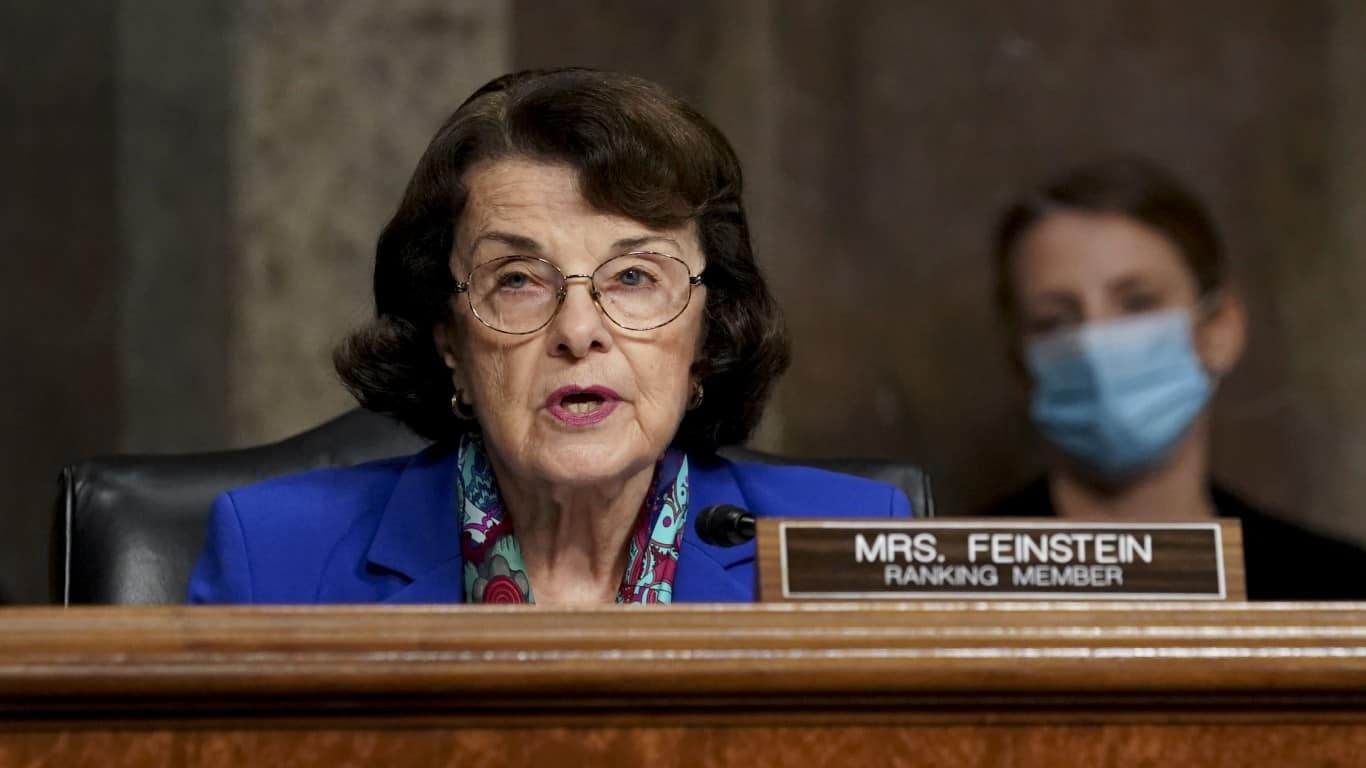
Assumed office: 1992
Bipartisan ranking: 74
Dianne Feinstein represented California in the Senate from 1992 until she died in September 2023. She was re-elected five times though there were already concerns about her advancing years in 2018 when she ran again at 84.
Her low bipartisan ranking for 2023 is not because of partisan politics, she was a strong believer in bipartisanship, but because she missed so many votes. As she struggled with cognitive decline and poor health, she was absent from the Senate for several weeks. As pressure began to mount for her resignation, she passed away at 90. At the time of her death, she was the longest-serving female senator in American history.
9 – Peter Welch (Vermont)
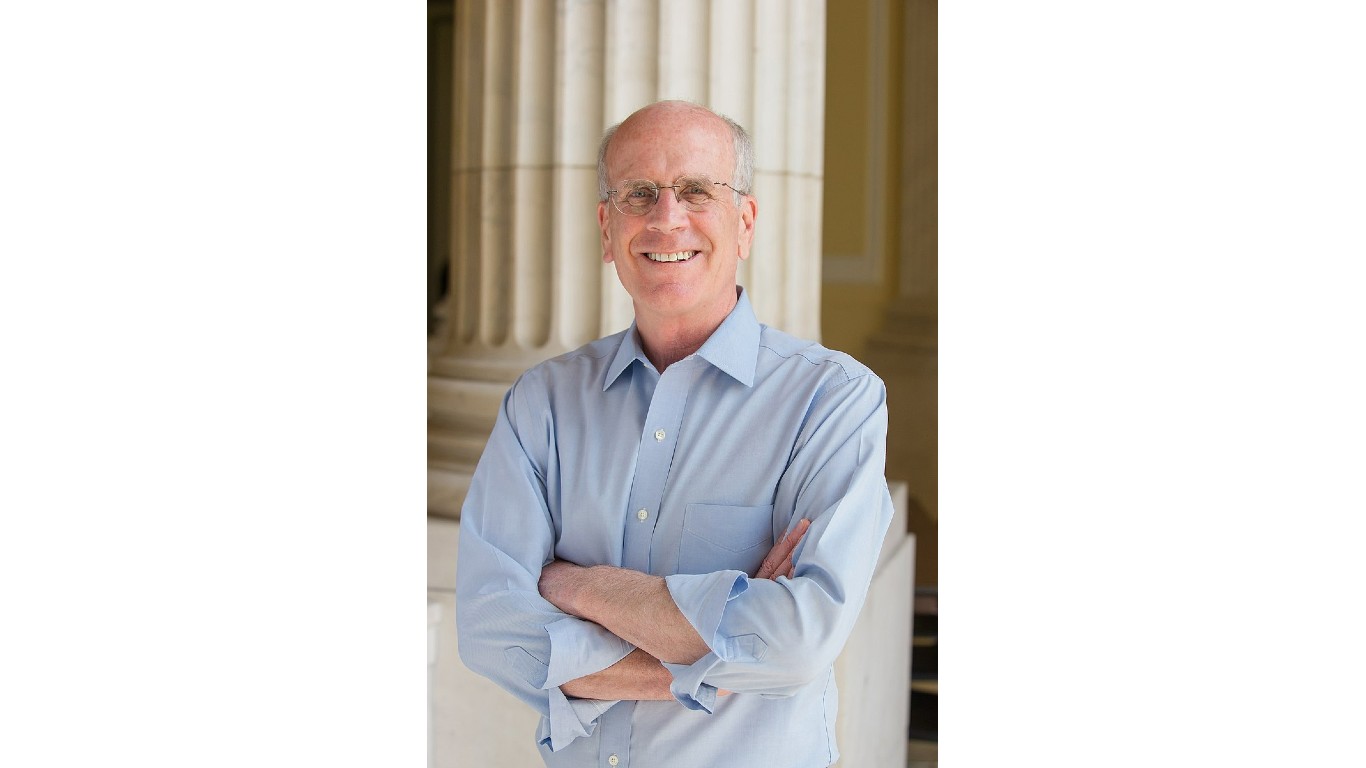
Assumed office: 2023
Bipartisan ranking: 75
At 75 years old, Vermont’s Peter Welch was the oldest person ever elected to the Senate in 2022. With the key endorsement of Bernie Sanders, he won the primary with 87% of the vote and cruised to an easy win in the general election. Like Sanders, Welch backs notable left-wing bills like the Green New Deal and Medicare-for-all. While both pieces of legislation poll well with voters, especially Democrats, they won’t find much bipartisan backing.
8 – Jack Reed (Rhode Island)

Assumed office: 1997
Bipartisan ranking: 78
Jack Reed was elected to represent Rhode Island in the Senate in 1996 in a landslide. His four re-elections were just as emphatic. As a Democrat in deep blue New England, he is one of the more left-leaning senators in the country. Though he ranks low in bipartisanship, and his bills seldom attract Republican co-sponsors, he enjoys a strong job approval rating in his home state.
7 – Ron Wyden (Oregon)

Assumed office: 1996
Bipartisan ranking: 80
Ron Wyden narrowly won a special election in January 1996, the first Democratic Senate victory in Beaver State since 1962. Wyden widened his margin of victory considerably in his subsequent re-election campaigns in 1998, 2004, 2010, 2016, and 2022. While he scores lower than most for getting bills out of committee, he fares much better working with the House. As he’s further left than most other senators, it’s not terribly surprising his bipartisan ranking is low.
6 – Chris Murphy (Connecticut)
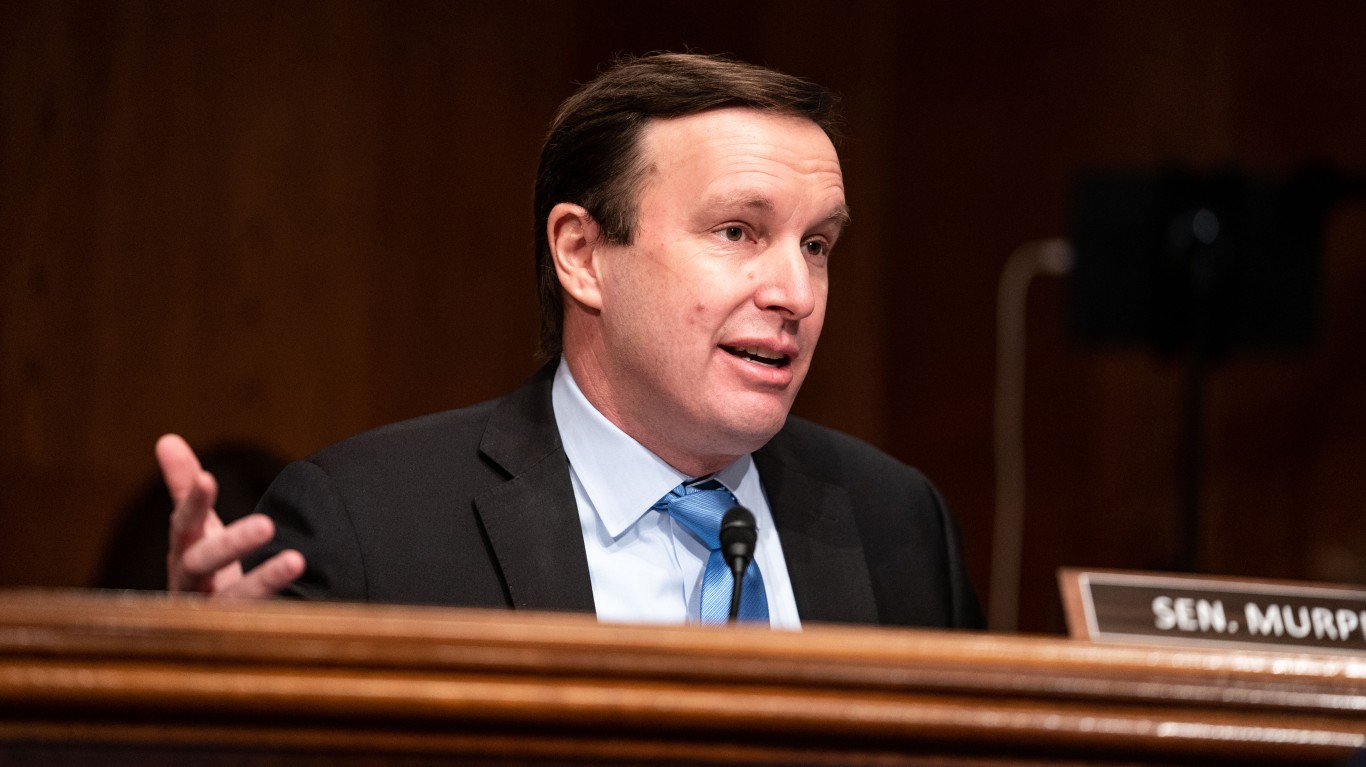
Assumed office: 2013
Bipartisan ranking: 81
Chris Murphy defeated Linda McMahon in 2012 to claim the seat vacated by Joe Liberman with 55% of the vote. He won again in 2018 with a higher share of the vote. Though he currently ranks as one of the least bipartisan senators, he’s been more amenable to reaching across the aisle in the last year. He helped negotiate an ultimately unsuccessful bipartisan border bill and has indicated this new approach will continue as he seeks a third term.
In 2024 he faces Matthew Corey, the same candidate he comfortably defeated in 2018.
5 – Ed Markey (Massachusetts)
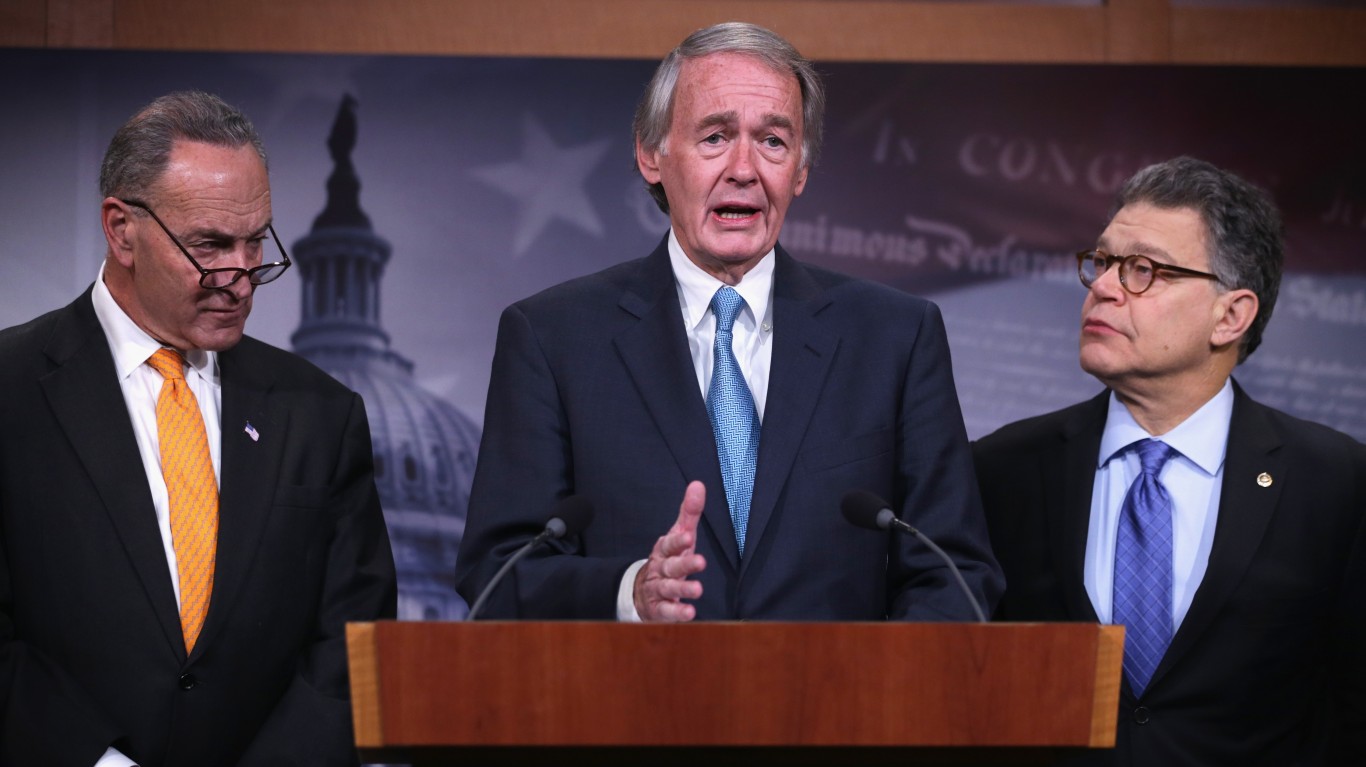
Assumed office: 2013
Bipartisan ranking: 82
After 36 years in the House of Representatives, Ed Markey ran for the Senate in the 2013 special election to see out John Kerry’s term. He easily won a full term in 2014 but faced a stiff primary challenge from Joe Kennedy III in 2020 which he narrowly overcame. Markey is the most left-leaning Democrat in the Senate and the Senate author of the Green New Deal. That outlook helped him survive a primary challenge in a heavily Democratic state and make him one of the most popular senators in the country. However, outside New England, progressive policies struggle to get much traction.
4 – Mazie Hirono (Hawaii)
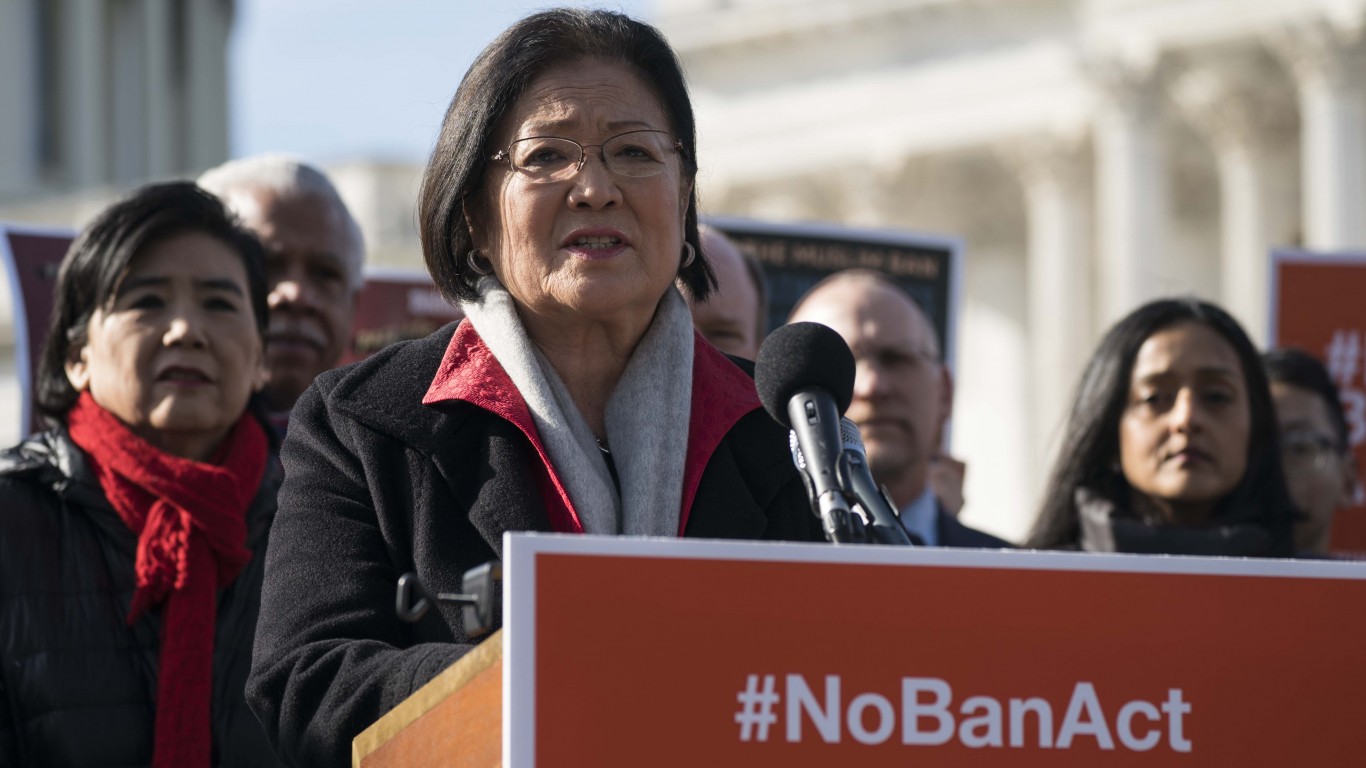
Assumed office: 2013
Bipartisan ranking: 86
Mazie Hirono was born in Japan and became a naturalized US citizen in 1959. After three terms in the House of Representatives and a failed run for governor, she won her first Senate race in 2012. She was easily re-elected in 2018. Hawaii hasn’t elected a Republican senator since 1970. Accordingly, Hirono is one of the most liberal members of the Senate, and her support for abortion, gun control, and universal healthcare has little appeal on the Republican side of the aisle.
She joined the least number of bipartisan bills among long-serving senators and her bills and resolutions got the fewest bipartisan co-sponsors in the 177th Congress. She faces a routine re-election campaign in November.
3 – John Fetterman (Pennsylvania)

Assumed office: 2021
Bipartisan ranking: 88
John Fetterman’s hulking 6’8” frame and casual dress sense make him one of the most recognizable figures in American politics. He won a high-profile Senate race in 2020, besting TV personality Mehmet Oz despite a shaky debate performance. He ran on a progressive, populist platform but has since distanced himself from the left. His low bipartisan score is partly attributable to a lengthy absence at the start of his tenure as he struggled with depression.
In the second half of his term, he may find that his full-throated backing of Israel, economic populism, and pro-law enforcement statements will find bipartisan support in the future.
2 – Bernie Sanders (Vermont)

Assumed office: 2007
Bipartisan ranking: 91
An independent who caucuses with the Democrats, Bernie Sanders came to national prominence during two failed runs for president in 2016 and 2020. He easily won election to the Senate in 2006 with 65% of the vote and was re-elected by similar margins in 2012 and 2018. As a self-described democratic socialist who champions left-wing causes, it’s not surprising Sanders often struggles to find support for his agenda in the Senate. As critics have noted, Bernie Sanders has only sponsored three inconsequential bills that actually became law.
He’s had a bit more luck with the bills he’s co-sponsored over the years but he’s most successful with roll call amendments. His principled, if seldom successful, stances on policy issues have made him one of the most popular senators in the country.
At 82 years old, he will run for another term in November, a race he’s all but certain to win.
1 – Patty Murray (Washington)
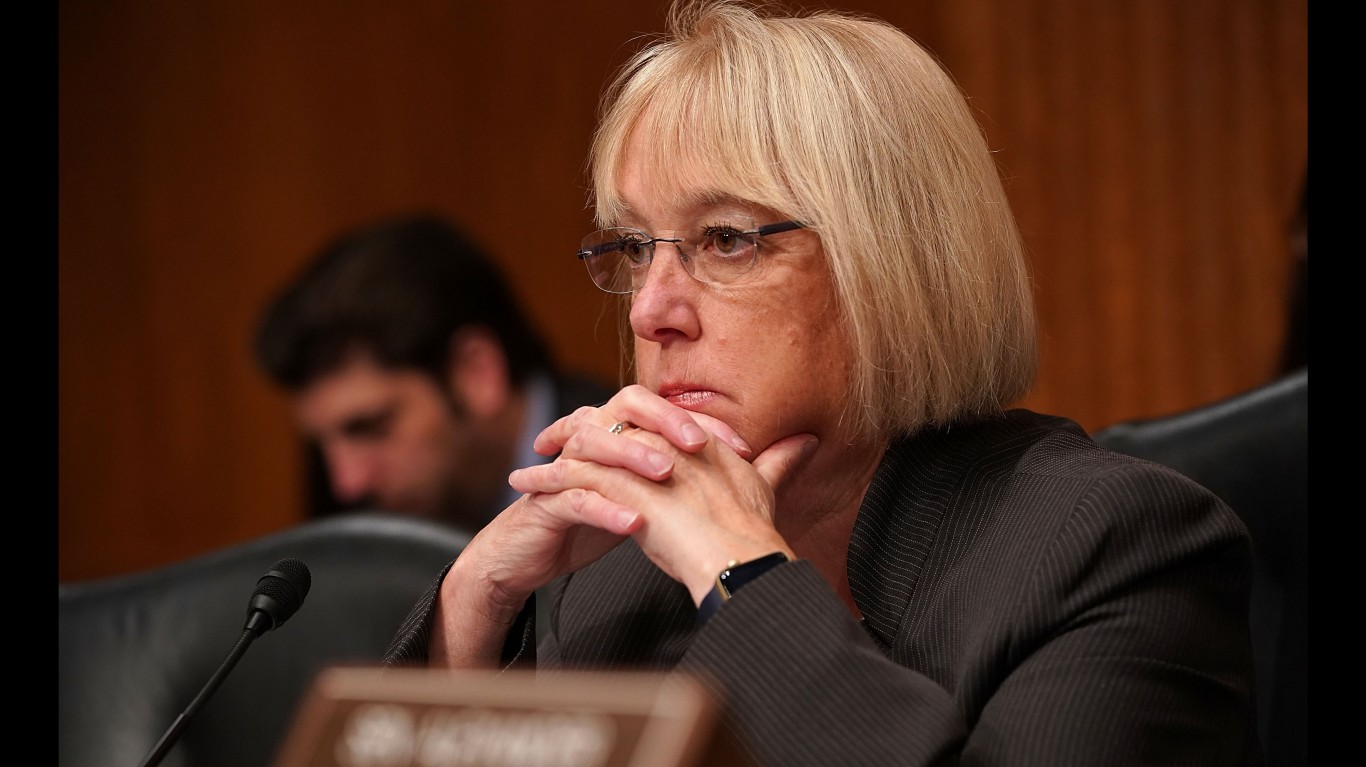
Assumed office:
Bipartisan ranking: 96
Patty Murray was elected to the US Senate in 1992 and has won re-election five times. Most of her support comes from the state’s western counties. She leans slightly more left-leaning than most senators and holds conventional Democratic views on abortion, gun control, and healthcare. These positions aren’t typically attractive for Republican cooperation. However, her low bipartisan ranking has more to do with her leadership responsibilities in the Senate than overt partisanship. She is the longest-serving female senator in US history and the current president pro tempore of the United States Senate.
Conclusion
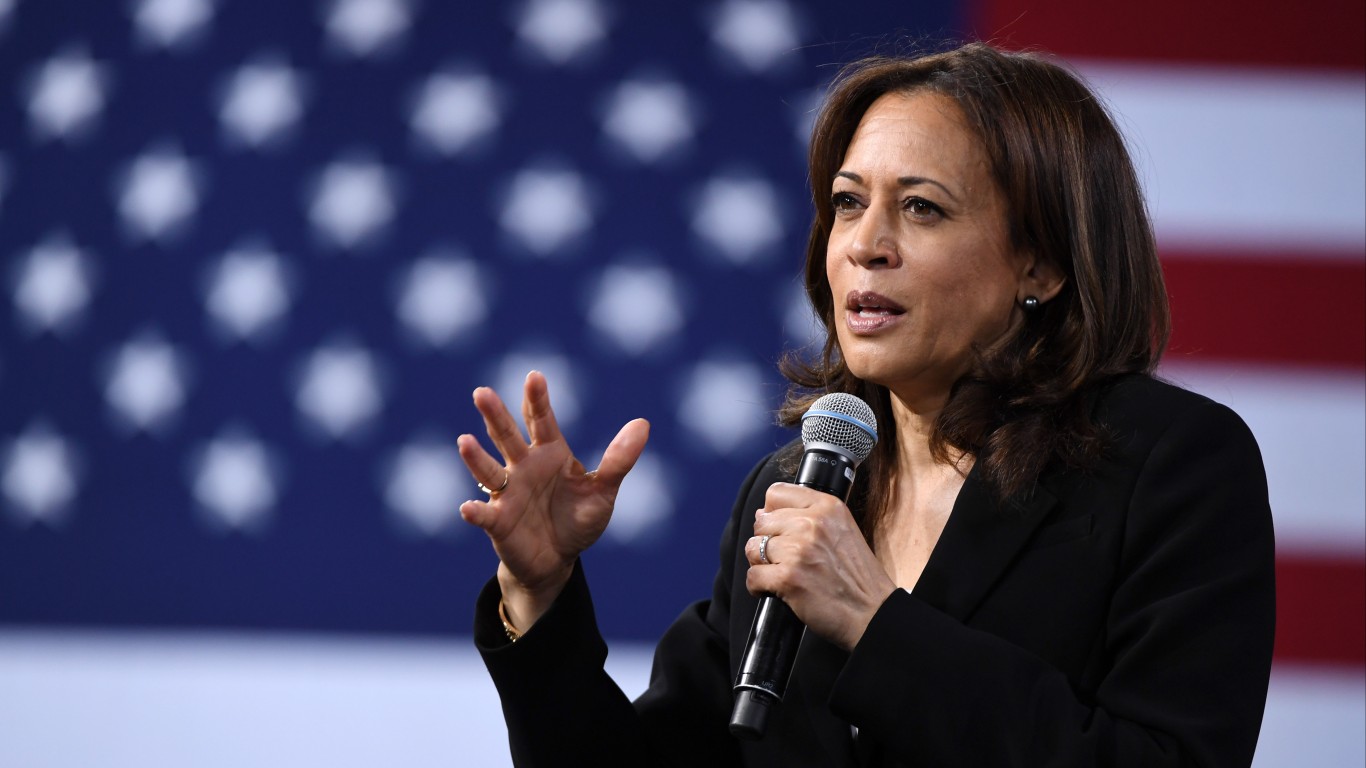
Most of the senators featured here represent predominantly liberal areas. Voters in New England and the West Coast would take a dim view of their senators cooperating openly with Republicans. That most of them have been in the Senate for multiple terms and enjoy high approval ratings is a testament to that fact. More bipartisan senators might decry the ideological purity, but it’s apparent the voters approve. All the senators up for re-election in November will retain their seats. With a divided legislature almost certain and the futures of the deal-makers in the air, the 119th Congress probably won’t be any more productive than the 118th.
Are You Ahead, or Behind on Retirement? (sponsor)
If you’re one of the over 4 Million Americans set to retire this year, you may want to pay attention.
Finding a financial advisor who puts your interest first can be the difference between a rich retirement and barely getting by, and today it’s easier than ever. SmartAsset’s free tool matches you with up to three fiduciary financial advisors that serve your area in minutes. Each advisor has been carefully vetted, and must act in your best interests. Start your search now.
Don’t waste another minute; get started right here and help your retirement dreams become a retirement reality.
Thank you for reading! Have some feedback for us?
Contact the 24/7 Wall St. editorial team.



